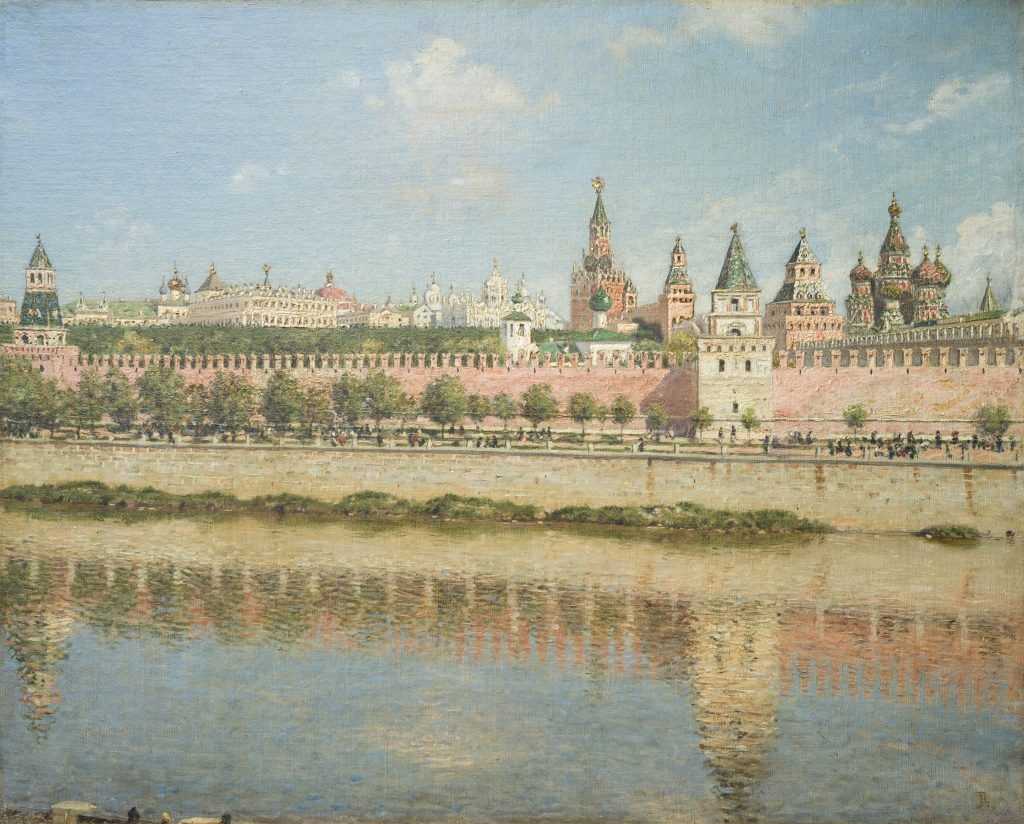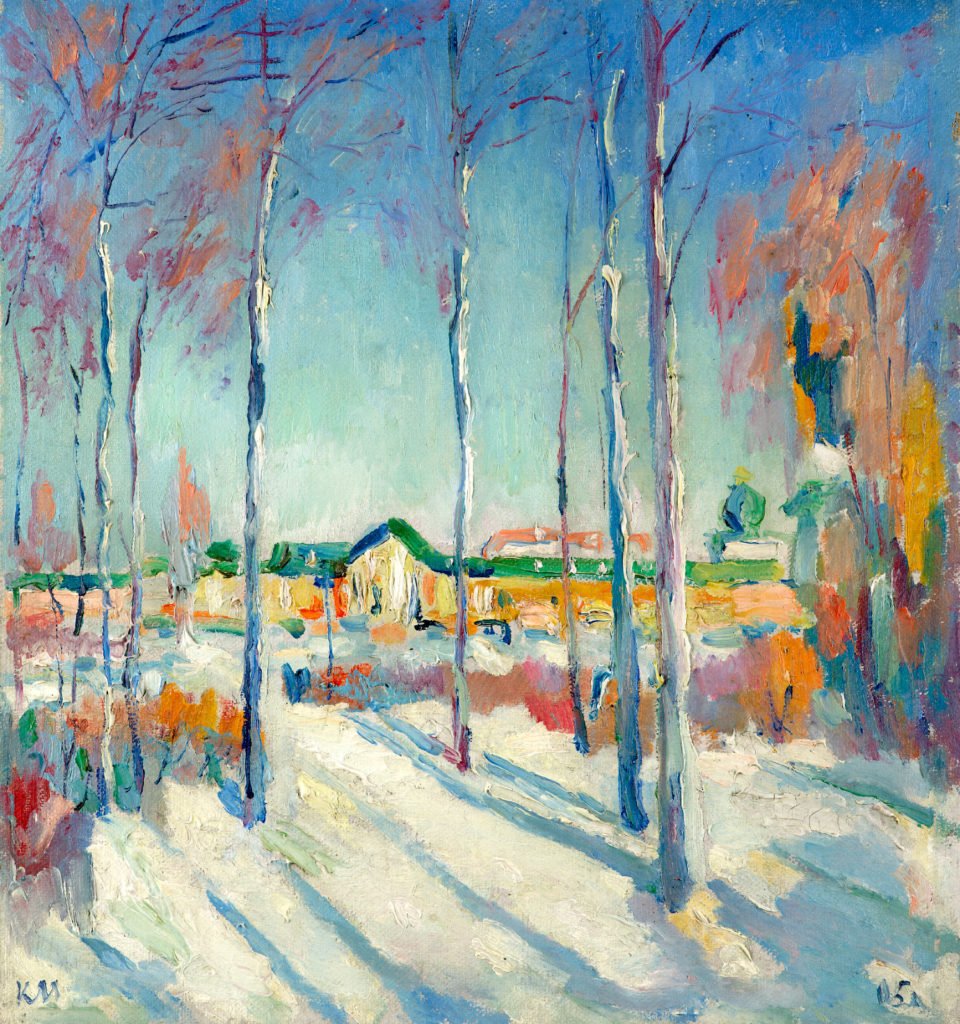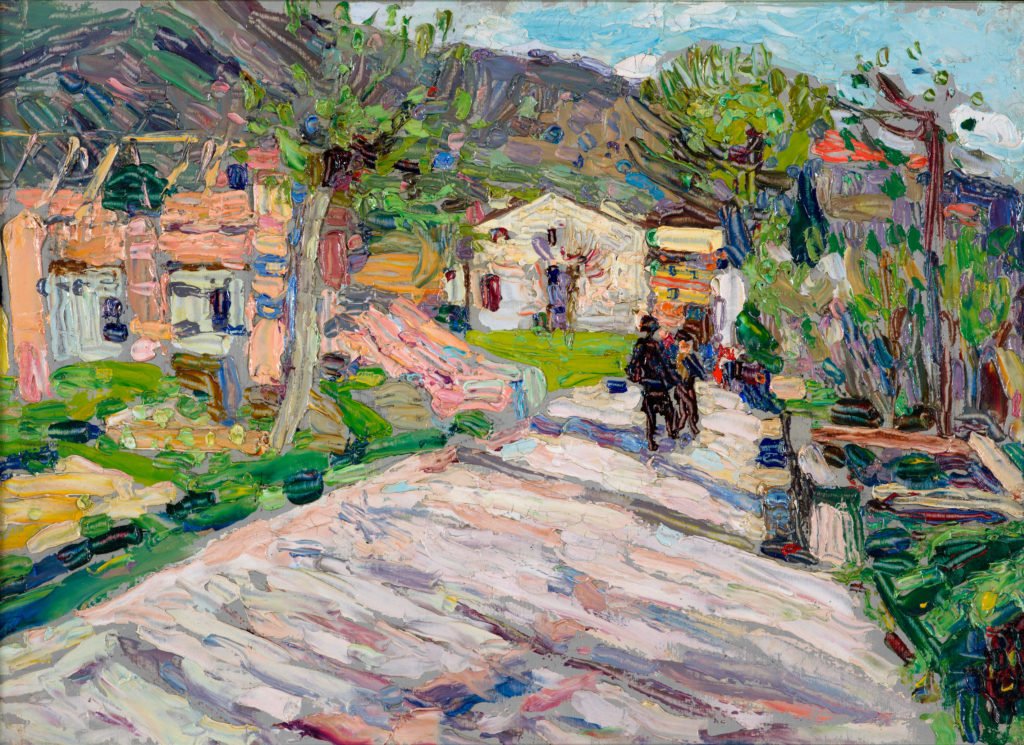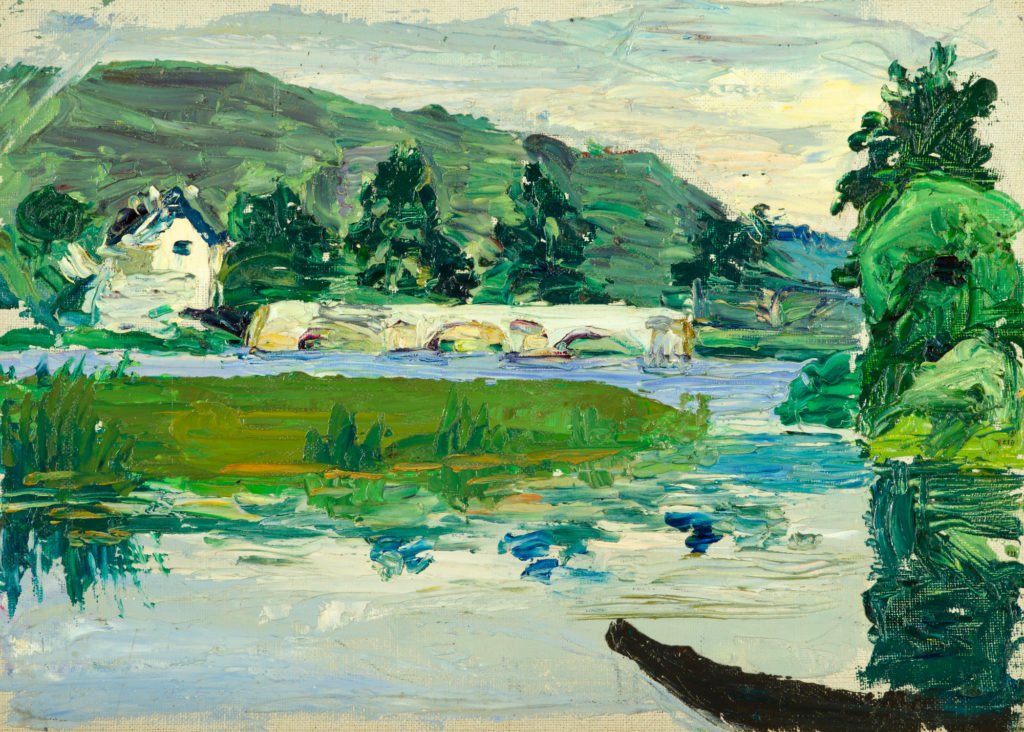Vasily Vereshchagin
The Moscow Cathedrals and river Moskva (in the spring)
40.5x49cm, oil on canvas
Signed with Cyrillic initial V. lower right
The Kremlin, situated on the Moskva River in the heart of Moscow, has been a pivotal center of Russian political power for centuries. Although a fortified settlement existed earlier, the term “Kremlin” itself emerged in the 14th century. Its iconic brick walls and towers, constructed in the late 15th and early 16th centuries under Ivan the Great, transformed the complex with the aid of Italian architects. This period also saw the building of several churches and the imposing Palace of Facets. Subsequent rulers, particularly Ivan the Terrible, expanded the Kremlin’s influence, ultimately establishing it as the residence of the Russian Tsar. While Moscow’s significance waned with Peter the Great’s relocation of the capital to Saint Petersburg, the Kremlin retained its ceremonial role, hosting coronations. Following the Russian Revolution, it became the Soviet government’s headquarters and now serves as the official residence of the Russian President.
This artwork was part of a large exhibition by Vasily Vereshchagin organized by the American Art Association. Renowned for his dramatic battle paintings, Vereshchagin brought 59 crates of artworks to New York in 1888. To introduce the American public to this intricate complex, the exhibition catalog included a drawing of the Kremlin with labeled buildings. Vereshchagin himself described the Moscow Kremlin as a unique and captivating sight. This painting captures the Kremlin from across the Moskva River, with Saint Basil’s Cathedral visible in the background.
Vereshchagin was one of the few Russian artists who gained worldwide fame during his lifetime. He radically changed the idea of battle painting: for being a glorification of a political regime to the bitter truth about the war. For his paintings about the war, he was nominated for the 1901 Nobel Peace Prize. Already during his lifetime, the press wrote about Vereshchagin that “in the greatness of his moral goals and the accessibility of his humanitarian edifications” he surpassed all artists.
Having gained recognition around the world, Vereshchagin became one of the best-selling and commercially successful Russian artists in history. Until now, prices for his artworks at world auctions have not fallen below several million.
“The Moscow Cathedrals and river Moskva (in the spring)” was one of the artist’s few non-battle works. Creating it the Russian painter, before the French impressionists, turned to working en plein air (in plein air) and experimenting with changes in lighting and atmospheric conditions using the example of an architectural monument.
Provenance:
The artist
American Art Galleries, New York, Vassili Verestchagin Collection To Be Sold By Auction, 18 November 1891, lot 66
Acquired at the above sale by J. M. Bonham for $315
Serge Alexander Korff (1906-1989)
Private collection, Zürich, Switzerland
Bibliography:
Exhibition catalogue, Exhibition of the Works of Vassili Verestchagin. Illustrative Descriptive Catalogue, New York, 1888, p.63, no. 98 listed
Exhibitions:
New York, American Art Galleries, Exhibition of the Works of Vassili Verestchagin, 1888, no. 98 (travelling exhibition, visiting the Chicago Art Institute, St. Louis, Philadelphia, Baltimore and Boston et al.)





